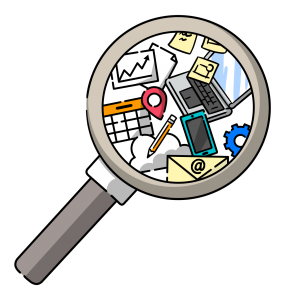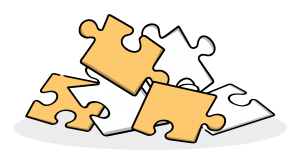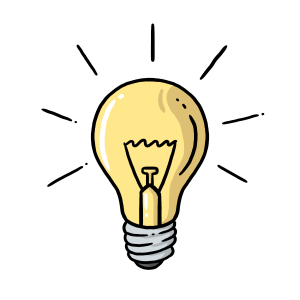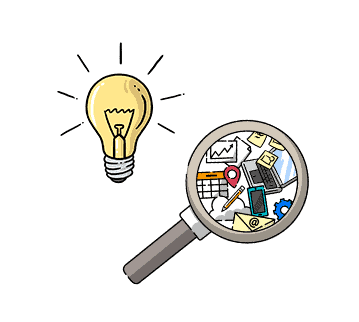Reduce Complex Information to Essential Information

Reducing complex information to essential information serves two main purposes: firstly, it saves time. With so much to do on a daily basis, social trends show a preference for reduced information that only includes that which is essential. This brings us to the second purpose of reduced information: it serves to optimally hold the viewer’s attention, which in turn helps viewers to rapidly form associations that enhance recollection. So, viewers understand and remember better what they have seen and heard.
Let’s look at Five Strategies for reducing complex information to essential information:
1. Finding essential information
 When a food extract or essence is made the molecules responsible for the flavor are separated from the rest of the food. This is what you are after when you reduce information to the essential – it is that essence of the concept that will make all the difference. It is the breaking down into smaller parts that gives meaning to the complex as it enables one to look at each facet, one at a time. Once a complex concept is divided into its various components, you can prioritize and create a plan for the efficient sharing of information. Decide what needs to be included and what can be left out of the message in order to present clutter-free communication.
When a food extract or essence is made the molecules responsible for the flavor are separated from the rest of the food. This is what you are after when you reduce information to the essential – it is that essence of the concept that will make all the difference. It is the breaking down into smaller parts that gives meaning to the complex as it enables one to look at each facet, one at a time. Once a complex concept is divided into its various components, you can prioritize and create a plan for the efficient sharing of information. Decide what needs to be included and what can be left out of the message in order to present clutter-free communication.
2. The young audience strategy
If you had to explain a certain concept to a young audience you would simplify by default. That is, you would automatically explain on a simplified level. You would choose words that are easy to understand and sketch a vivid picture by only including what is truly essential to get the message across. All unnecessary detail will fall by the wayside. Therefore, if you need to explain a complex concept, try to do the explanation with a young audience in mind. This will spontaneously cause you to reduce information to essential information. Once you have this explanation in place, read it again but, this time, with the true target audience in mind. A little tweaking may be necessary – check if there are perhaps some points in the explanation that need changing so as to not insult the intelligence of your target audience.
3. Identify problem areas
 This approach requires you to specifically focus on those parts of the concept that are truly complicated. Is it really necessary to keep them in the explanation, or can you explain around the problem areas? If you reduce information to essential information, by identifying areas that may be difficult to understand, you can successfully simplify the message, provided that you carefully consider if these areas are truly needed to have an overall understanding of the concept/topic, or whether they can be left out altogether.
This approach requires you to specifically focus on those parts of the concept that are truly complicated. Is it really necessary to keep them in the explanation, or can you explain around the problem areas? If you reduce information to essential information, by identifying areas that may be difficult to understand, you can successfully simplify the message, provided that you carefully consider if these areas are truly needed to have an overall understanding of the concept/topic, or whether they can be left out altogether.
4. Get rid of the paraphernalia
This is yet another approach in reducing information to essential information: get rid of the extra bits of information. Do not get caught up in the detail. Look at the concept from a vantage point in order to get an overview. Then focus on the overview and remove the paraphernalia. The larger perspective provides a platform for reducing information to the essential. You need to put yourself in the shoes of the recipient. What do they need to know and what will merely distract from the essence of the message?
5. Draw the information
 One cannot possibly sustain complexity if one wants to create a quick drawing explanation of a concept. Such an exercise will compel you to automatically extract only the essential parts of the topic. You will automatically leave out unnecessary detail unless you are a master artist with lots of time on your hands. Visuals also help to come up with a sort of road map involving decision-making with regard to what is of importance to start with and what is the part that is best to use at the end of the explanation. By drawing an explanation of the concept, in rough sketches, you are in actual fact designing a plan and creating a visual path for getting to the finishing line. A drawing makes it easier for you to identify elements that can simply be left out – thereby reducing the information to only the essential.
One cannot possibly sustain complexity if one wants to create a quick drawing explanation of a concept. Such an exercise will compel you to automatically extract only the essential parts of the topic. You will automatically leave out unnecessary detail unless you are a master artist with lots of time on your hands. Visuals also help to come up with a sort of road map involving decision-making with regard to what is of importance to start with and what is the part that is best to use at the end of the explanation. By drawing an explanation of the concept, in rough sketches, you are in actual fact designing a plan and creating a visual path for getting to the finishing line. A drawing makes it easier for you to identify elements that can simply be left out – thereby reducing the information to only the essential.
The ability to distill the essence of information is paramount to conveying information in a clear and engaging way. Translate this in an explainer video format and recipients are presented with an alternative that has the potential to quickly highlight the most important aspects of the message.

